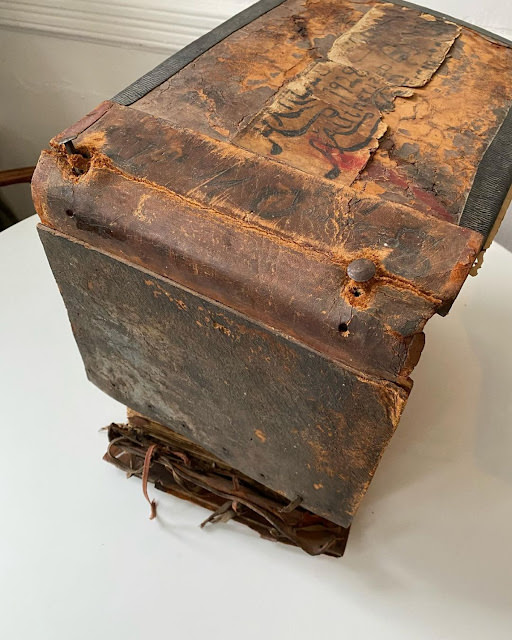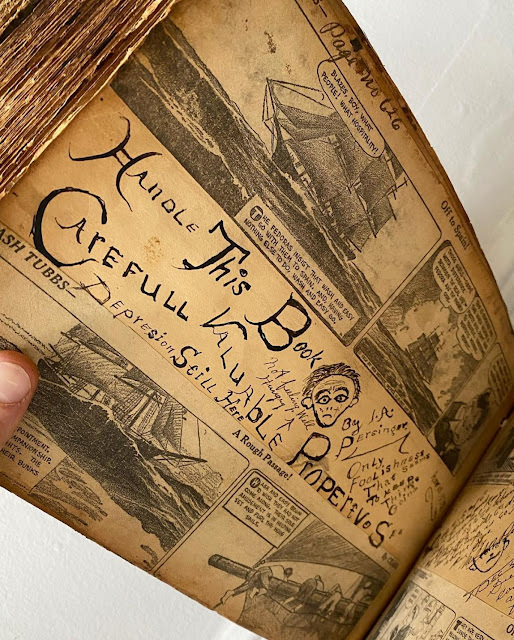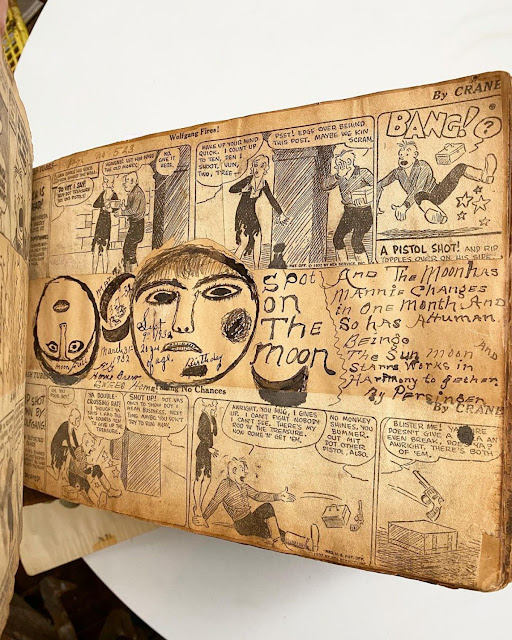In the heart of Fredonia, Kansas, within the walls of a barber shop named “Bungalow,” a unique historical artifact began to take shape in 1928. This was not a typical item one would expect to find in a place dedicated to haircuts and shaves. It was a 35-pound comic scrapbook, meticulously compiled by the shop’s owner, a creative and observant barber. This scrapbook, primarily a collection of Roy Crane’s “Wash Tubbs” comic strips, transformed over the years into a vivid tapestry of life during the Great Depression, reflecting the humor, hardships, and spirit of the era. This blog post delves into the fascinating world of Persinger’s scrapbook, exploring its contents, significance, and the historical context it captures.
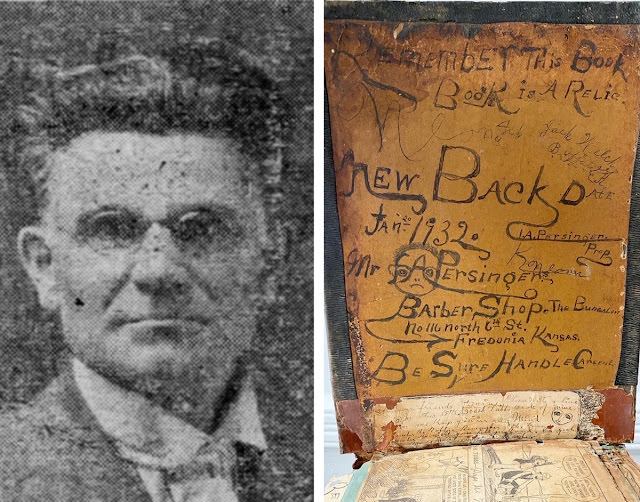
Persinger (shown here in 1918) invited his barbershop customers to contribute to the scrapbook—as long as they handled it with care.
The Genesis of the Scrapbook
The scrapbook’s journey began with Persinger’s simple desire to entertain his customers. Choosing Roy Crane’s “Wash Tubbs” for its popularity and appeal, Persinger started collecting and pasting the comic strips into an album. “Wash Tubbs” was renowned for its adventurous themes and engaging storytelling, making it a perfect choice to captivate the barber shop’s patrons. However, as time passed, the scrapbook evolved into something far more profound than just a collection of comics.
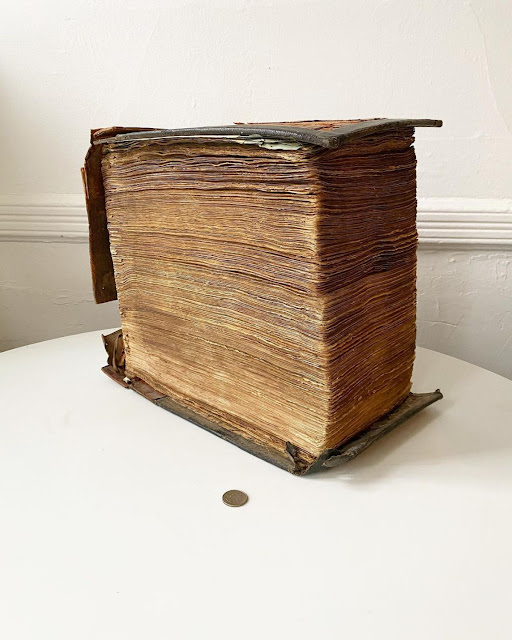
From Entertainment to Historical Diary
Over nearly a decade, until 1939, Persinger’s scrapbook grew in size and scope. It was patched up, reformatted, and updated, gradually becoming a historical diary of sorts. The pages of the scrapbook, while still hosting two “Wash Tubbs” strips each, began to serve as a canvas for commentary on the state of the world, the length of the Depression, and various other topics. This transformation mirrored the changing landscape of the United States during the Great Depression, making the scrapbook a poignant reflection of the times.
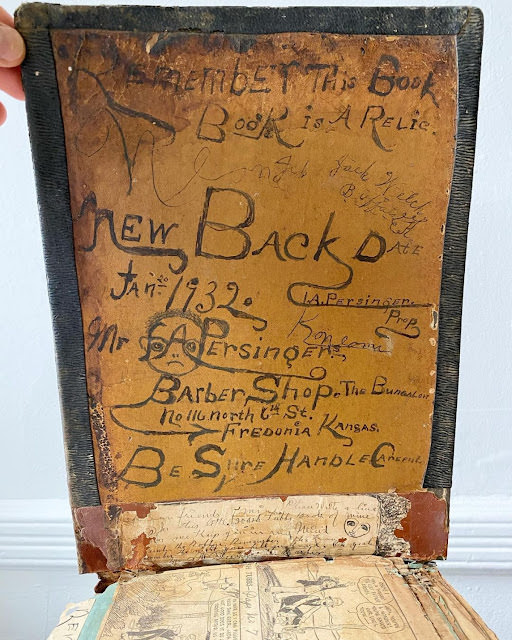
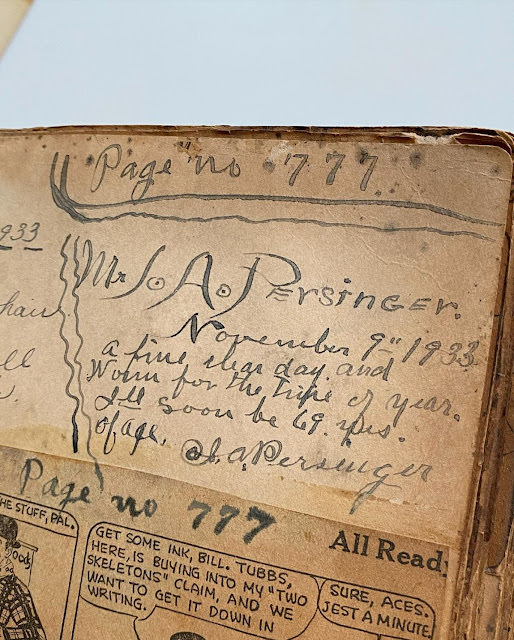
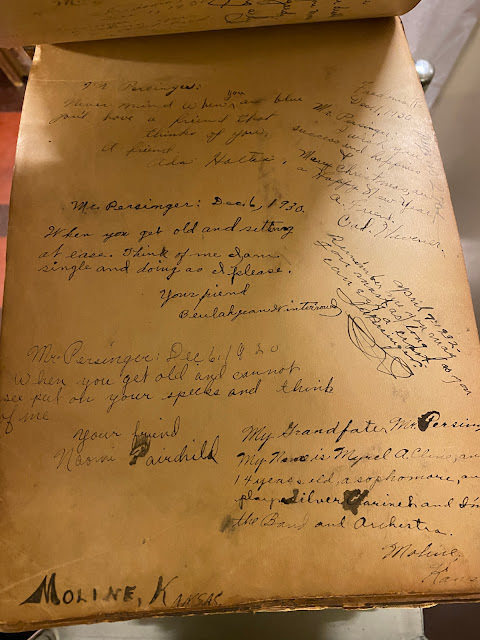
It became a place where the barber, his customers, and visitors could leave comments, share thoughts, and document their experiences and observations. The scrapbook also bore similarities to traditional guest books found in bars, museums, and other establishments, offering a space for collective expression and memory.
The Relic and Its Messages
Persinger affectionately referred to his scrapbook as a “relic,” a term that underscores its value and significance. He was acutely aware of its fragility and the importance of preserving it for posterity. Among its pages, one finds not only comic strips but also inscriptions that reflect the enduring nature of the Depression. Persinger’s notes often carried a blend of humor and insight, suggesting that “Only silliness (or humour, I suppose) seems to keep things going.” This perspective highlights the resilience and adaptability of people during challenging times, using humor as a coping mechanism.
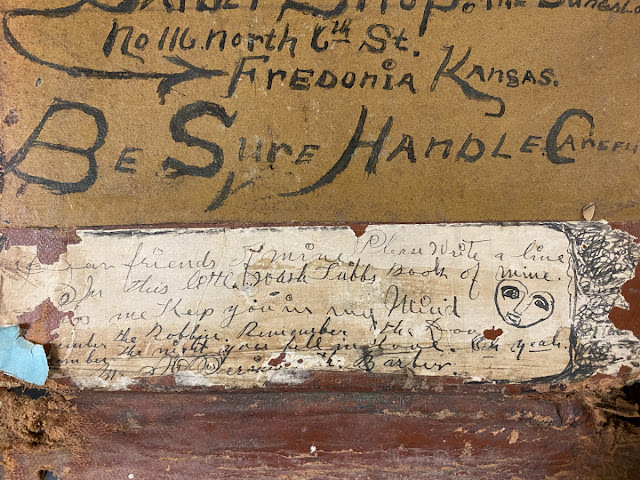
Its collection of testimonials and recollections from individuals who faced various hardships because of the Great Depression. These personal stories, intertwined with the comic strips, offer a unique window into the lives of those who lived through the era. They reveal the struggles, hopes, and day-to-day realities of people trying to navigate an uncertain world, making the scrapbook an invaluable historical document.
Through its pages, one can glean insights into the social fabric of the time, the power of community, and the role of humor in facing adversity.


